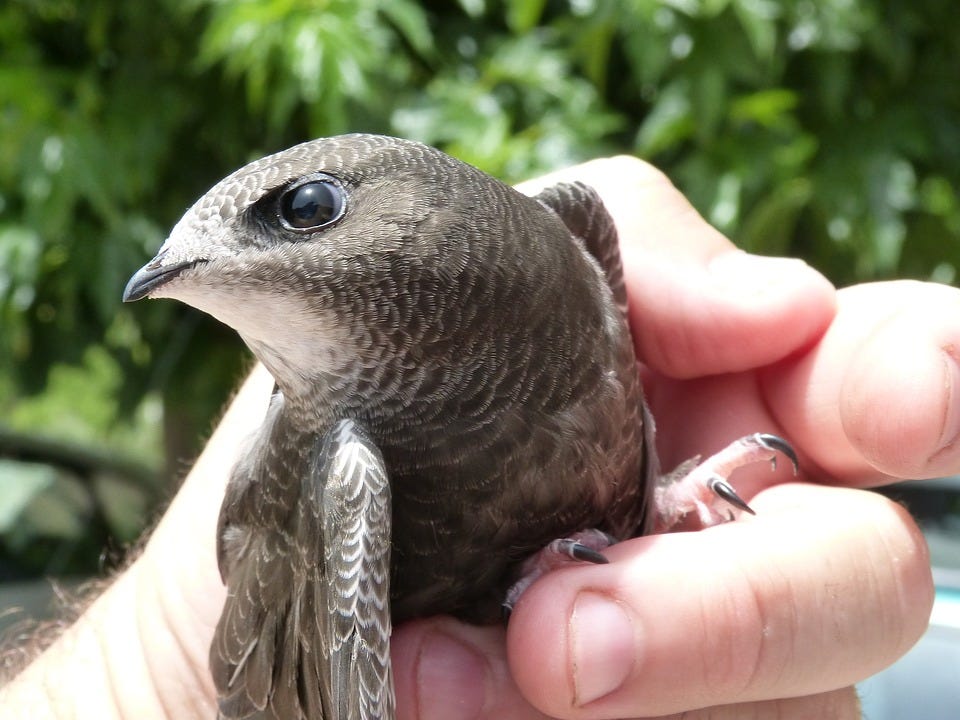Swift
Screaming street racer
For many of us the swift makes the most welcome sound of urban summer.
Swifts are among the latest of our summer birds to return, with just a few pioneering individuals recorded before late April, and many arriving well into May
We often hear their distinctive screams before we see them, high over our rooftops or racing at chimney-height along the streets.
Swifts more than perhaps any other bird are truly creatures of the air. They spend the great majority of their days (and nights) on the wing, landing only to raise young.
Indeed their Latin name ‘apus’ means ‘without feet’, which is inaccurate but an understandable mistake, given their tiny landing gear that’s hardly ever on show.
Early in the season it’s the adults that can be heard and seen, often in groups, reclaiming their streets. Later on, in July, they are joined by their scalier-looking offspring for practice laps and feeding sorties, again shrieking away as they tour the neighbourhood.
Unlike the similarly aerodynamic swallows and martins, they raise only one brood, and are among the earliest of our birds to head back South.
Swifts have undergone one of the sharpest recent declines of any of our birds, with more than half disappearing between 1995 and 2016. One of the reasons appears to be a lack of suitable breeding sites, as their favoured eaves and roof cavities are lost to renovations.
Time for a swift brick, perhaps?
Media credits:
Thanks to Lawrence Shove & British Library for the audio, and to makamuki0 for the image of a young swift.

